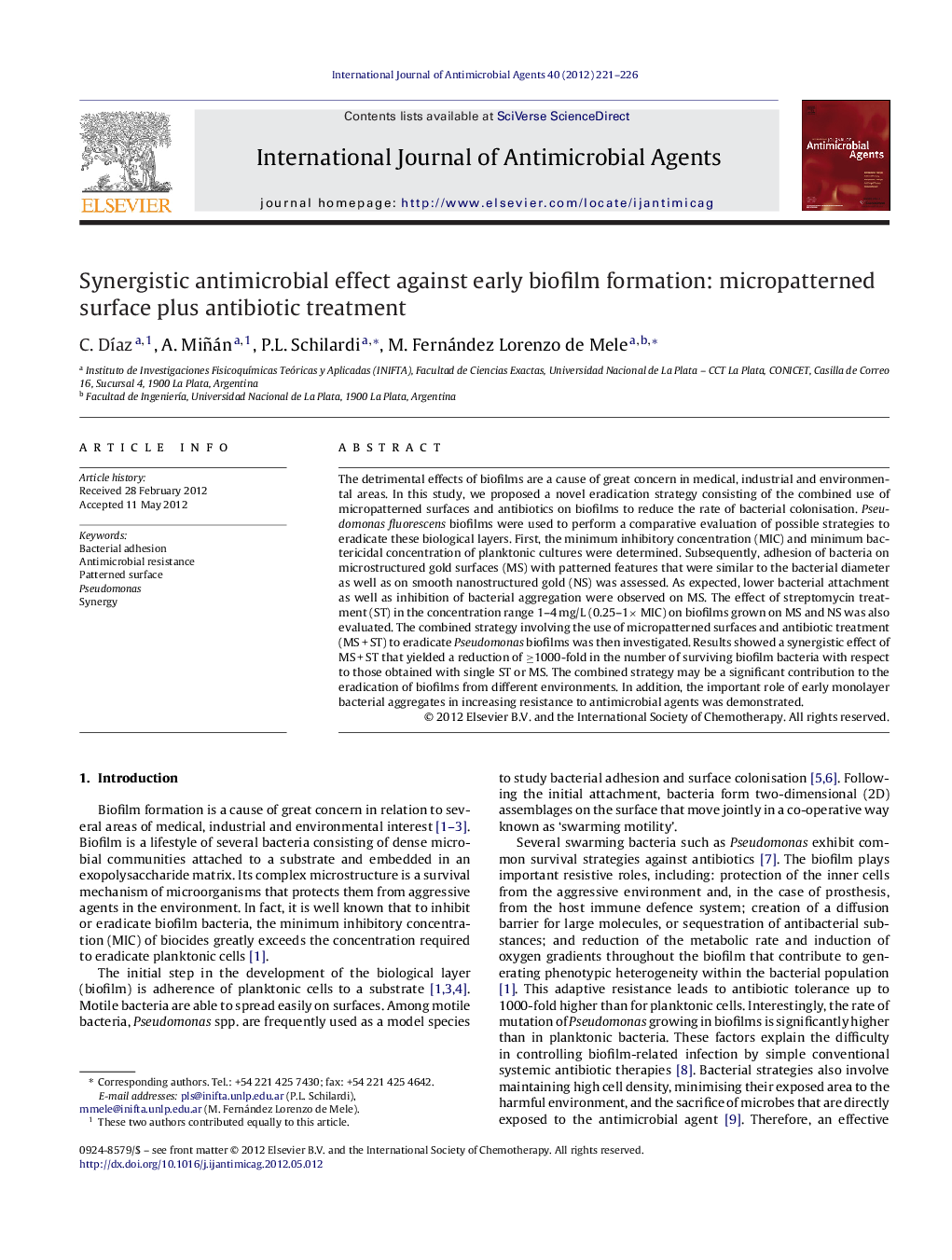| Article ID | Journal | Published Year | Pages | File Type |
|---|---|---|---|---|
| 6118191 | International Journal of Antimicrobial Agents | 2012 | 6 Pages |
Abstract
The detrimental effects of biofilms are a cause of great concern in medical, industrial and environmental areas. In this study, we proposed a novel eradication strategy consisting of the combined use of micropatterned surfaces and antibiotics on biofilms to reduce the rate of bacterial colonisation. Pseudomonas fluorescens biofilms were used to perform a comparative evaluation of possible strategies to eradicate these biological layers. First, the minimum inhibitory concentration (MIC) and minimum bactericidal concentration of planktonic cultures were determined. Subsequently, adhesion of bacteria on microstructured gold surfaces (MS) with patterned features that were similar to the bacterial diameter as well as on smooth nanostructured gold (NS) was assessed. As expected, lower bacterial attachment as well as inhibition of bacterial aggregation were observed on MS. The effect of streptomycin treatment (ST) in the concentration range 1-4 mg/L (0.25-1à MIC) on biofilms grown on MS and NS was also evaluated. The combined strategy involving the use of micropatterned surfaces and antibiotic treatment (MS + ST) to eradicate Pseudomonas biofilms was then investigated. Results showed a synergistic effect of MS + ST that yielded a reduction of â¥1000-fold in the number of surviving biofilm bacteria with respect to those obtained with single ST or MS. The combined strategy may be a significant contribution to the eradication of biofilms from different environments. In addition, the important role of early monolayer bacterial aggregates in increasing resistance to antimicrobial agents was demonstrated.
Related Topics
Life Sciences
Immunology and Microbiology
Applied Microbiology and Biotechnology
Authors
C. DÃaz, A. Miñán, P.L. Schilardi, M. Fernández Lorenzo de Mele,
